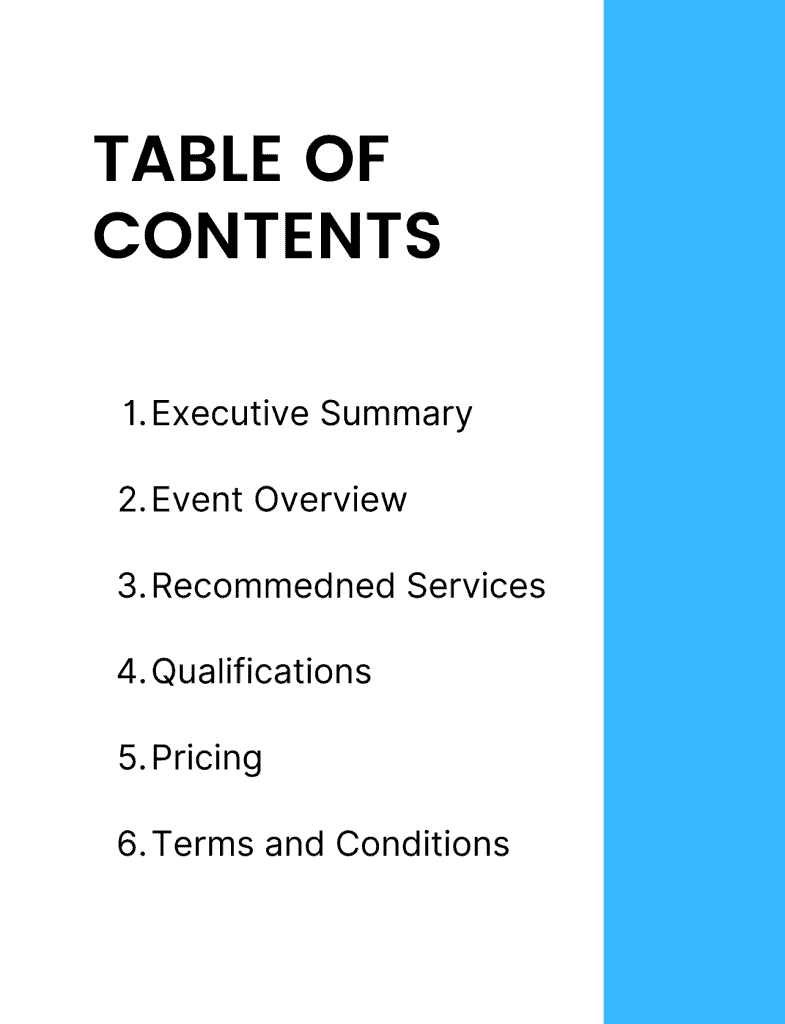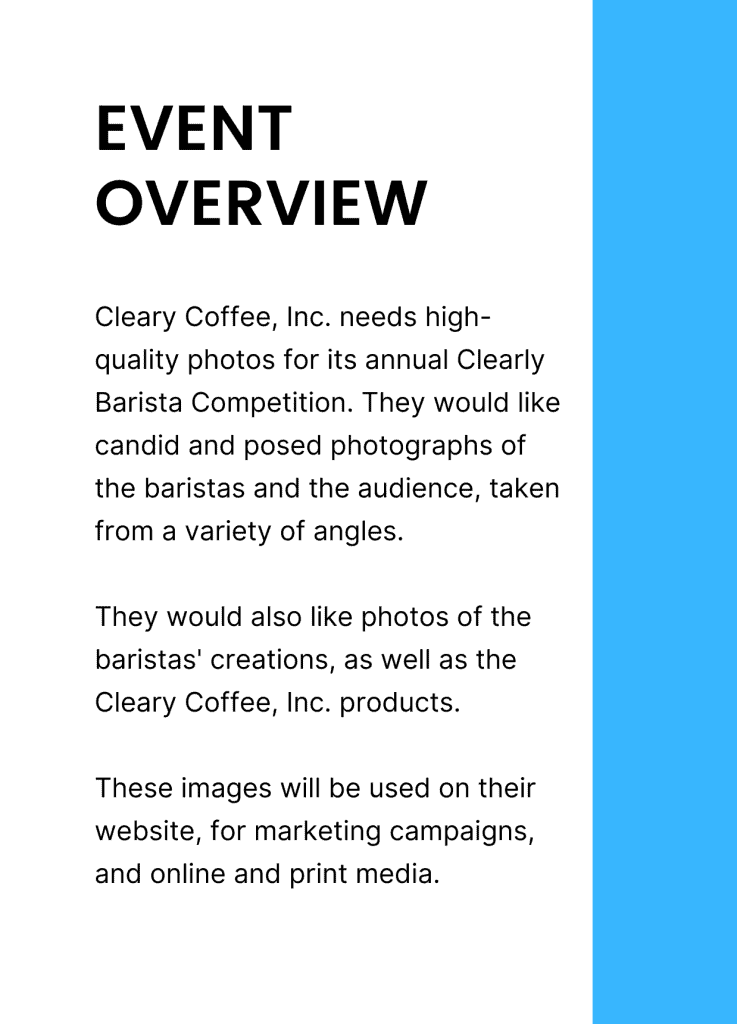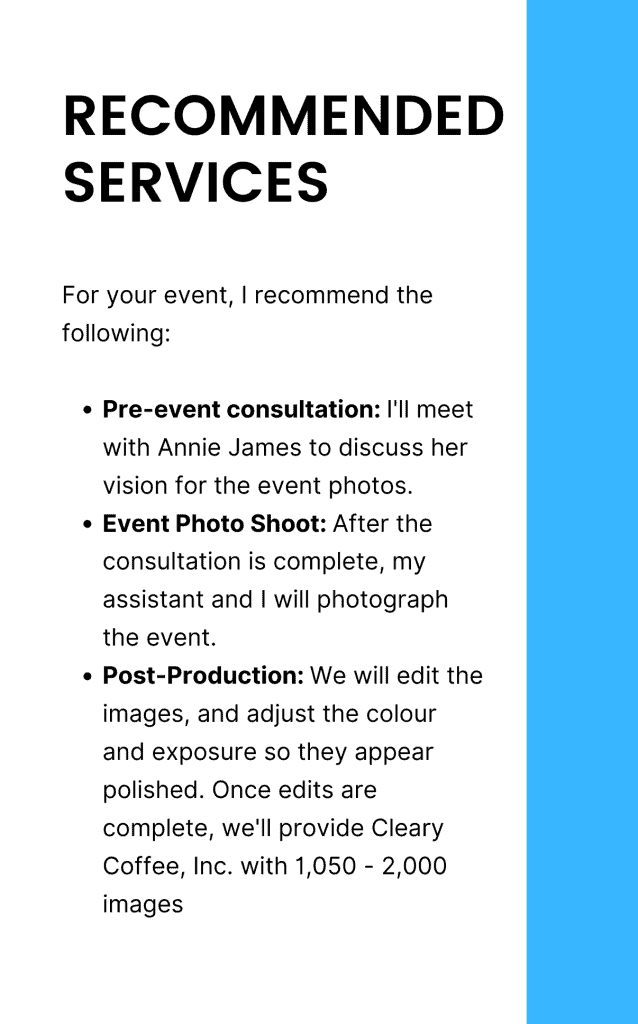You've just launched a new company, and your customer base is growing. Even if you're progressing, you still believe you could be doing more. There's a huge universe of untapped potential all around you, prospects who would profit from your product or service, and you know it.
And the problems you're having have less to do with the quality of your solution and more to do with how you might reach your potential audience. That's when proposals for business come in. They can help you connect with potential customers. A strong one can clearly state your value proposition and persuade a company or organisation to work with you.
What Is A Business Proposal?
A business proposal is a document used to encourage a company to purchase a product or service. A proposal is either solicited or unsolicited, depending on whether the purchasing firm is actively seeking proposals that suit a specific need or is reacting to an offer to evaluate a proposal, frequently from a salesperson.
For example, an unsolicited proposal could arise from a dinner conversation at a trade show in which the seller informs a prospect that he has a solution to the prospect's problem and asks, "Would you like me to submit a proposal for that?"
A common misunderstanding is that business proposals and business plans are the same things. The goal of the proposal is to sell your product or service rather than your company. A proposal, rather than supporting you in your quest for investors to fund your business, aids you in your search for new consumers.
Purpose Of Business Proposal
By its very nature, a business proposal has a significant impact on your image because it portrays your true condition for a given job. It is a guarantee to the customer that you will work hard to fulfil the project's principal aim and complete it by the deadline.
It is sometimes regarded as a vital step in a joint sale where the customers weigh exceptional results against the price, therefore accepting the proposal is a huge accomplishment. Many businesses throughout the world are well-versed in the art of proposal writing and have excellent skills in preparing a proposal in a short amount of time.
The proposal includes all of the information about you and your company that is required to complete the task. It is in your favour if you meet all of your customer's requirements and can complete the project within a reasonable time frame.
Prior to concluding a contract, the customer would prefer to get a proposal in order to assess your abilities and determine whether you meet their requirements. When a proposal succeeds in achieving the agreed-upon transaction, both parties get exactly what they want.
Type Of Business Proposals
There are various forms of business proposals that are used in today's business world. A business proposal is a document created for a specific purpose, such as obtaining a job or completing a project. It is usually given to a firm or a customer to provide a concise overview of the seller's services and professional qualifications.
Business Proposals can be divided into three categories.
Formally Solicited
In most organisations, a formally requested proposal is written in response to the customer's requirements. The proposal is divided into the following categories in order to suit the needs of the proposal.
Request For Proposal (RFP)
RFPs include a summary of the customer's offer in order to ensure that you meet all of their requirements. It may also include steps for preparing a concise proposal as well as evaluation criteria. RFPs are typically issued by the customers when existing products or services do not match their needs.
Request For Quotation (RFQ)
When a consumer requires a bigger quantity of items, he or she will send an RFQ. In such circumstances, costs aren't the only factor to consider; other factors such as commodity availability, delivery time, and service quality are all important. A strong proposal could lead to a large project for the vendor.
Invitation For Bid (IFB)
IFBs are granted if a customer requests certain services, such as construction. The primary purpose of issuing an IFB is to verify prices. On the other side, while the quality of the services is important, prices have a greater impact than quality.
Request For Information (RFI)
RFI was issued to obtain information on the products, services, and merchants that were offered. Its primary goal is to analyse "marketing intelligence" in order to reach a final agreement on a business contract. So many merchants take it extremely seriously and meticulously fill out the required information. It's undoubtedly one step closer to definitive RFPs, RFQs, and IFBs.
Informally Solicited
These kinds of business offers are the result of a conversation between the store and the customer over the phone. It's also known as the Sole-Source Proposal because there are no standards to meet; all that's required is a quick meeting to close the business. Normally, these proposals are around 25 pages long, but they can be as little as 5 pages or even fewer.
Unsolicited
Unsolicited Business Proposals are similar to marketing brochure that offers vital information regarding your requirements. There is no direct connection between the suppliers and the customers in this form of proposition. In the final moments of any conference, it is also known as "leave-behind" or "give-away." The primary goal of sending out an Unsolicited Business Proposal is to maximise the likelihood of a sale.
How To Write A Business Proposal
Every letter in the business is important, whether it is for a little contract or a large transaction. There are many different types of letters and documents that are used to gather information about a specific topic in the business. One of the letters used to seal a contract is the business proposal.
Generally, anytime a wonderful chance arises that has the potential to result in a massive sale and a large profit, you must seize it by outsmarting your competitors. To accomplish so, you must develop an effective proposal that accurately depicts the product or service's quality, quantity, and dependability. Creating a business proposal assures the customer that the vendor fully meets their requirements.
Understanding The Customer's Requirements
Reading all of the relevant requirements and ensuring that you satisfy your customer's specifications before creating a business proposal will help to improve the ideas for writing in an efficient and appealing manner.
The initial stage in analysing a proposal is to ask a few questions, such as does the vendor match your customer's requirements? Will you be able to meet the agreed-upon deadline once the contract has been awarded? The opportunity lasts for a few minutes and then vanishes, so rather than squandering it, you should seize it by creating a proposal that caters to your customer's preferences.
Understanding Customer's Needs
After reading and comprehending the project's criteria, the next step is to comprehend the nature and problem of your customer. Examine what prompted them to request a proposal. In the eyes of your customer, how much is this project worth?
Examine your profit after closing the deal. Instead of focusing on merely the items and benefits of having a relationship with your customers, understanding their specific concerns might assist you to craft a winning proposition. Your primary goal should be to comprehend and meet the needs of your consumer.
Simple And Clear
Writing a complicated proposal may not appeal to your customers; to avoid this, you should write a straightforward proposal with concise lines that reflect your worth. A profitable win is a result of writing a basic, brief, and unambiguous proposal.
Be Professional
The proposal should be written in business language to demonstrate to your customers that you are valuable and knowledgeable about business operations. There are numerous online businesses that provide quick services for generating a business proposal in exchange for a charge.
Personal Interest Can Be Added
You should avoid using redundant sentences that may not meet your customer's expectations, as well as utilising a language pattern that is potentially boring this causes an expression to your customer that your interest in approved business proposals is minimal.
Even if you hire a writer to create business proposals, you should double-check each corner of the proposal to ensure it catches the reader's attention. The majority of entrepreneurs choose proposals that grab their attention.
Proofreading
Finally, the proposal is ready to be sent, but proofreading it a few times before sending may reveal a mistake or the use of cheap ideas. Each element, from the company summary to the contact information, should be basic, clean, and to the point.
Checking for spelling and grammatical problems, on the other hand, is quite important. Furthermore, brief sentences are required for improved comprehension. Each term that your customer may find unusual or unfamiliar should be defined concisely. A competent employee or vendor should deliver the proposal. While the customer is reading the proposal, the presence of the deliverer is required since they may ask a few questions to which someone should respond smartly.
Elements Of A Business Proposal
It's critical to know the business you're writing for before you start drafting your business proposal. If they've issued you an RFP, read it thoroughly to ensure you understand what they're looking for. An initial conversation or meeting with a new client can also be beneficial to ensure that you completely understand the problem they're seeking to solve and their goals.
It's time to start drafting your company proposal after you've completed your research. Although there is no one-size-fits-all strategy to crafting a business proposal, let's look at some common elements.
Title Page
On the title page, you must give some fundamental facts. Introduce yourself and your company. Include your name, your company's name, the date the proposal was filed and the name of the customer or individual to whom the proposal is being sent. Your title page should strike a balance between interaction and professionalism. Because it sets the tone, make sure yours is sleek, pleasing to the eye, and not too "out there."
Table Of Contents
A good user experience is important in almost any situation, and business proposals are no different. For the individuals on the other side of your proposal, you need to make things as clear and accessible as feasible. A table of contents is the first step.
A table of contents tells your potential client exactly what the business proposal will cover. If you're sending your proposal electronically, a clickable table of contents that jumps to the various sections of your proposal for simple reading and navigation is a good idea.
Executive Summary
The executive summary explains why you're submitting the proposal and why your solution is the best option for the potential client. It's important to be specific here - why are you the greatest option for them?
The benefits of your company's products or services, as well as how they can address your potential client's problem, are outlined in your executive summary, which is similar to a value proposition. Even if they don't read the entire proposal, the prospect should have a good sense of how you can help them after reading your executive summary.
State The Problem Or Need
This is where you give a synopsis of the problem that the potential client is facing. It allows you to demonstrate that you have a thorough awareness of their needs and the challenge they're trying to solve.
Research, critical thinking, and extra consideration are all important in this situation. You must do your homework. Take a broad look at the challenges your client is dealing with and how you may assist them in resolving them. Then, in a convincing way, frame them to prepare you for the next step.
Suggestion For A Solution
This is where you provide a solution to the problem. This phase, like the last, requires a focus on specificity and personalisation. Make sure your proposed solution is tailored to the client's requirements so they know it was written just for them.
Let them know what deliverables you will be providing, how you will provide them, and when they can anticipate them.
Your Qualifications
Are you capable of resolving this prospect's issue? Why should they have faith in you? Use this part to explain why you're the best candidate for the job. To increase your authority, including case studies of your previous success stories and any applicable awards or accreditations.
Pricing
Things might get a little complex when it comes to the pricing since you don't want to under-or over-price your goods. Include an optional fee table if you want to give the prospect a few pricing options based on their budget. Some proposal software has responsive pricing tables, which allow customers to check out the products or services they're interested in, and the price will alter immediately.
Terms And Conditions
This is where you go over the project's timing, cost, and payment schedules in further depth. It's a summary of what you and the client agree to if they accept your proposal. Before sending the proposal to the customer, double-check the terms and conditions with your legal staff.
Include A Spot For Signatures To Document Agreements
Include a signature box for the client to sign, and make sure they understand exactly what they're signing. This is also a good time to ask the prospect to contact you if they have any unanswered questions that you can answer.
Differences Between Business Proposal And Business Plan
Understanding the fundamentals of a business proposal is a skill that you must have whether you are in business, work, or pursuing a degree. The terms business plan and business proposal are frequently used interchangeably. These two papers are diametrically opposed.
In terms of content, organisation, writing style, goals, and purpose, a business plan differs from a business proposal. A business plan is a written presentation of facts, but a business proposal is a price quote and a call to action.
| Business Proposal | Business Plan |
| Focuses on your approach to solving prospective customer's challenges | Focuses on business goals and how you will achieve them from ideation to execution |
| The key elements are products or services, benefits, company information, pricing information, pricing structure | The key elements are business model, marketing strategy, financial projections |
| It is a time-sensitive document | It is a long term goal with a scope to make changes in the plan as per the need |
| It is used to convince prospective customers of your credibility and value | Used to ensure internal and external parties (employees, founders, investors, etc.) are on the same page |
Conclusion
Customers define successful proposals as "responsive," which means the bidder has done his or her homework, is intimately aware of the client's objectives and goals, and has thoughtfully answered to all areas of an RFP. When all else is equal, responsiveness is far more crucial than the presentation's visual appeal or even the flow of its content.
A beautiful and well-written proposal that misses or ignores essential aspects of the client's project will lose against a dull but responsive proposal. The bare minimum of preparation is meeting with key decision-makers ahead of time and asking probing questions to establish exactly what they are looking for. A competitive price, of course, is generally the deciding factor between equal competitors.
Reference
How To Write A Business Proposal















